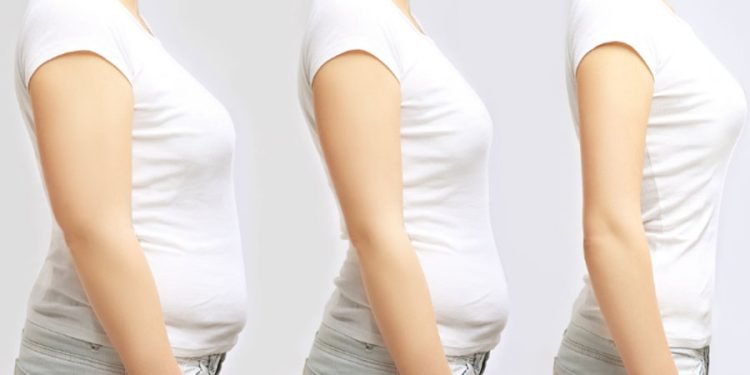When it comes to postpartum weight loss we must consider various factors. Some of those determinating factors are:
- the way a person gave birth,
- how fast the body heals and
- how much weight women gained during pregnancy.
- the body’s constitution
- does woman breastfeeding
- How active woman was before and during pregnancy
Mentioned factors greatly impact how fast women will lose weight. However, besides the exercise that significantly accelerates the weight-loss process, it’s equally important to have a corresponding diet. By this, we mean that your diet should encourage your weight loss goal and at the same time provide you with the necessary nutrients that a woman in the postpartum period needs. Consulting medical weight loss doctors can help ensure that both your exercise and diet plans are safe and effective, tailored to your individual needs.
Many women, to advance their postpartum weight loss, use phentermine which is an effective way to reduce the appetite, and in combination with the right exercise and a phentermine diet plan, it can provide superior results.
How long does it take to lose weight?
The time required to achieve desirable results depends on each person. However, some circumstances are general:
- Weight loss occurs after giving birth due to deliverance. Placenta, baby, and amniotic fluid averagely contribute to women’s weight between 10 and 13 pounds. After delivery, you can expect that your weight will almost immediately decrease for this amount.
- In the first week after childbirth, women continue to lose weight by the expulsion of retained fluid.
- In the next six weeks after delivery, weight loss will result depending on diet and physical activity. However, it`s not recommended to lose more than a pound or two weekly due to the risks of health issues.
Other factors that determine weight loss
Breastfeeding women additionally burn around 500 more calories per day. This statistic implies that breastfeeding is the natural promoting factor of weight loss.
C-section is a surgery. As with any surgery, the body needs time to recover, which implies that postpartum recovery might take more time than in cases of natural delivery. This impacts the time women with c-sections will be able to start exercising. In most cases, doctors recommend avoiding workouts first six weeks after childbirth or even more time for exercises that strain the stomach area.
Most women that had an uncomplicated vaginal delivery, can start with brief exercises after a few days of giving birth. This activity considers yoga, stretching, and walking as preparation for a more intense workout.
Postpartum Exercise tips
Take things easily
Every woman has her own recovery path. Your body will tell you when it`s ready and when it`s the right moment to start to exercise. For some, taking a walk right after birth can be unchallenging, while for others this task will have to wait for a few days. You can start by going up and down the stairs a couple of times a day.
The important thing is not to force yourself to exercise too soon or too hard.
A useful strategy is to increase your activity duration by 10% each week, or in the case of distance-based activity increase distance by 10% each week.
Exercise in short intervals
We all know that a newborn baby demands a lot of the mother’s time and commitment. Try implementing exercise in those free moments when the baby sleeps, or other family members play with the baby. Exercising for 10 minutes a couple of times a day is as good as a 30-minute workout in one session.
Exercise with your baby
Baby can add weight to your exercise. Hold the baby in your arms when doing usual physical activity, exercise, or house cleaning. This will be a good exercise for you, a baby will enjoy lulling by your movements, and the bond between your baby and you will further strengthen.
Consider heart rate
When starting your exercise plan, begin with low-impact exercises such as yoga, tai chi, or walking five days a week. The recommendations are to limit your heart rate to 60% of the maximum rate per minute. For tracking heart rate you can use a smartwatch or other devices, or simply count your pulse on your wrist over one minute.
Strength core and pelvic floor
Pregnancy and delivery significantly weaken the core and pelvic floor. Exercising these muscles you make internal pressure on the deep abdominal muscles, and restores spine and pelvic organ support. Core exercises contribute to reducing diastasis recti. Diastasis recti is a condition when due to pregnancy, abdominal muscles separate. Some exercises like sit-ups, double-leg lowering, or churches can worsen this condition, while core exercises are an adequate way to correct diastasis recti.
Healthy diet
Remember to eat food high in protein, fiber, vitamins, and minerals. Drinking enough water and nutritive ingredients will help you recover while making you feel fuller for longer and preventing food cravings.
Avoid added sugar and refined carbohydrates, highly proceed food, alcohol, and crash diet with few calorie intakes.
Don’t forget to rest.
Having a baby and exercising require sufficient rest and sleep. Don`t neglect the fact that your body needs to recover and provide yourself enough time for deep, quality sleep and necessary rest.
Final Thoughts
When starting your weight loss plan, keep in mind that postpartum weight loss isn`t typical so don`t be hard on yourself. Regardless of usual weight loss, your body primarily needs to recover from delivery and nine mounts of pregnancy that have promoted immense changes in your body.












